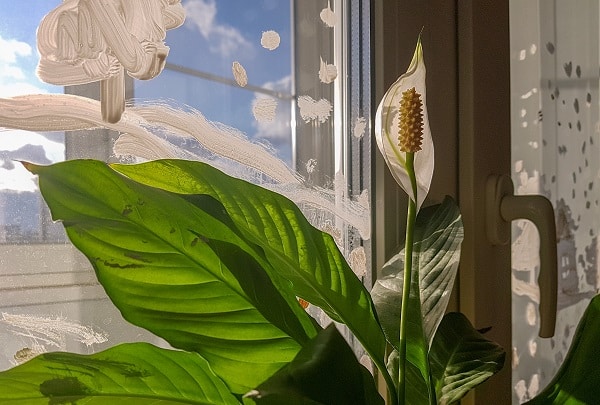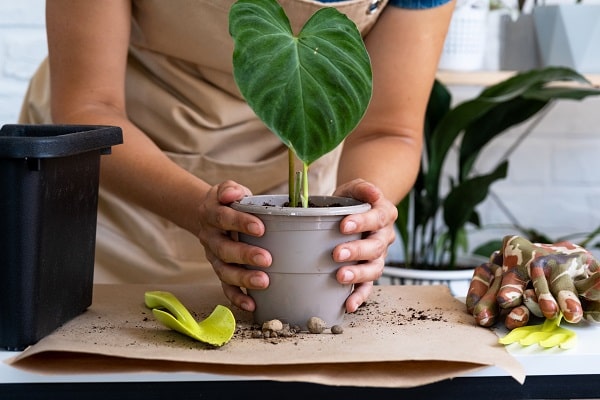Indoor plants offer many benefits, from air purification to mood enhancement. During the chilly winter months, they can serve as living decor that brightens space and contributes positively to mental health. However, winter poses particular challenges for plants, such as reduced light, lower humidity, and cooler temperatures. As a result, the selection of appropriate plants that can withstand these seasonal changes becomes vital. This comprehensive guide will explore a range of indoor plants suitable for winter, focusing on their care needs and benefits. Various factors such as light requirements, ability to thrive in dry or cold conditions, and ease of care will be considered to help you make an informed decision.
Contents
The Challenges Of Winter For Plants

Winter presents several obstacles for plants, most notably lower light levels. As the days become shorter and natural light becomes scarce, many plants struggle to perform photosynthesis efficiently. Some plants may exhibit signs of stress, such as yellow leaves, while others may halt growth altogether. Understanding the decrease in light availability is crucial for modifying care routines for indoor plants during the winter months.
Dry indoor air is another challenge posed by winter. Most homes use heating systems that reduce indoor humidity, leading to drier conditions. This can be detrimental for plants that thrive in humid environments. Leaves may become crispy, and the plant may suffer from slowed growth or even death if not properly attended to. Incorporating humidifiers or misting can alleviate this issue to some extent.
The Importance Of Choosing The Right Plant

Picking the right indoor plant for winter goes beyond aesthetic appeal. A plant’s light requirements should align with the natural light conditions of the indoor environment. Some plants require bright, indirect light, while others tolerate lower light levels. Failing to match plants with the correct light conditions can result in an unhappy, unhealthy plant that may not survive the winter.
Additionally, each plant has its own watering needs, which may change during the winter. Overwatering is a common mistake, particularly when plants are already experiencing less light and potentially slower growth. Lower humidity levels in winter may trick individuals into thinking plants need more water than they do. Being mindful of these factors is essential in choosing a plant that aligns with an individual’s ability to provide adequate care.
Low-Light Loving Plants

Certain plants are more forgiving for those who live in homes that don’t receive much natural light, particularly in the winter. The Snake Plant, also known as Sansevieria, is a popular choice. This plant is highly tolerant of low light conditions and can withstand irregular watering. It’s ideal for beginners or those who can’t dedicate too much time to plant care.
Another option for low-light conditions is the ZZ Plant. Officially known as Zamioculcas zamiifolia, this plant is aesthetically pleasing with its glossy leaves and is extremely resilient. It can thrive in indirect light and requires minimal watering. The ZZ Plant is particularly useful for people who travel frequently or are prone to neglecting their plants.
Plants That Thrive In Dry Conditions

Winter usually means turning up the heat indoors, often leading to dry air. Plants like succulents are well-suited for these dry conditions. Succulents store water in their leaves, making them quite resilient to lower humidity levels. Varieties such as Echeveria and Sempervivum provide aesthetic value and require minimal care.
Cacti are another excellent choice for dry indoor environments. These plants are accustomed to arid conditions and can go for long periods without water. With a range of sizes and shapes, cacti can serve as fascinating focal points in a room. Just be mindful of their spines, particularly if pets or small children are in the home.
Cold-Tolerant Plants

Not everyone maintains a warm indoor temperature during the winter. Certain plants can withstand lower temperatures for those who prefer a cooler home. The Norfolk Island Pine offers a Christmas tree-like appearance and can adapt to cooler conditions. Its soft needles and woody stems make it a charming addition to any room.
The Rubber Plant is another cold-tolerant option. While it prefers more humid conditions, it can tolerate cooler temperatures. With its broad, dark green leaves, the Rubber Plant adds a tropical touch to interiors, contrasting the often bleak winter landscape outside.
Plants That Purify Air

Air quality can suffer during the winter due to increased indoor activity and reduced ventilation. Spider Plants are excellent for improving indoor air quality. They are easy to care for and effective in removing pollutants such as formaldehyde and xylene from the air.
Pothos, with its heart-shaped leaves and beautiful vine-like structure, is another plant known for its air-purifying qualities. Like the Spider Plant, Pothos is forgiving and can tolerate various lighting conditions and watering schedules. It’s a versatile plant that can be hung or potted, making it adaptable to various interior designs.
Plants For Mood Enhancement

Winter can be difficult for many, with shorter days leading to seasonal affective disorder (SAD) for some. Lavender is a plant known for its calming and stress-reducing properties. With its fragrant flowers and leaves, lavender can help create a serene atmosphere.
Similarly, the Peace Lily can positively impact mood. Beyond its air-purifying qualities, its elegant white blooms add a sense of tranquility to any space. Moreover, it’s relatively easy to care for, requiring only indirect light and regular watering.
Easy-to-Care-for Starter Plants

For those new to indoor gardening or simply want a low-maintenance option, Aloe Vera is an excellent choice. Known for its medicinal properties, particularly for treating minor burns or skin irritations, this plant requires minimal care. It thrives in indirect light and needs infrequent watering.
Philodendron is another easy-to-care-for starter plant that comes in various shapes and sizes. It can be either hung or potted with heart-shaped leaves and a trailing habit. The Philodendron tolerates a range of light conditions and forgives if you occasionally forget to water it.
The Bottom Line
Indoor plants brighten living spaces and offer many benefits, especially during the challenging winter months. There is a perfect plant for every home, whether dealing with low light, dry air, or cooler temperatures. From low-light lovers like the Snake Plant and ZZ Plant to resilient choices like succulents and cacti, various options exist for every plant parent. Investing in indoor plants is not just a commitment to better air quality and enhanced moods; it’s an investment in a healthier, happier lifestyle. So why not add a touch of green to your home this winter?



